The Stratosampler
Need to sample leaves out of the tree canopy well beyond the range of available pole pruners? Sounds like a job for...
The Stratosampler
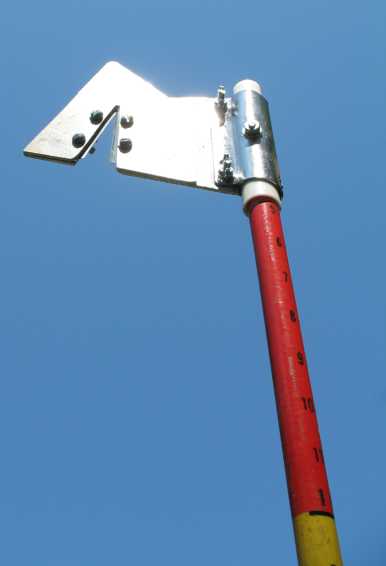
Without being too melodramatic, it can be a bit difficult to sample leaves high in tree canopies. Standard pole pruners typically have a reach of 12 to 14 ft (3.6 - 4.3 m), which when added to the operator's height might allow you to reach to a bit over 20 ft (6 m).
However, in a recent sampling task for some ongoing sudden oak death management research, we needed to go much higher to reach the lowest available leaves in tanoak forests.
While a number of techniques have been used to sample high foliage (shooting down branches is one of the old classics), we needed a fairly accurate and efficient way to snag these samples, which led us to put together the Stratosampler. We have used this device to sample leaves from a height of about 43 ft (13 m). It helps a bit of you're tall to get the last meteror so.
We were aided by the fact that we had a telescoping 35 ft (10.7 m) fiberglass measuring pole on hand from a previous project. If you don't have one on hand, a 2008 price check indicates that one can be had for about $325 (A 50 ft [15.2 m] pole is available at $440).
We replaced the tip of the pole with the the cutting head illustrated below, which is based on the idea of a pruning hook. Most of the hardware used to make the head were odds and ends found in the shop. The business end of the sampling head is a v-shaped notch, the sides of which are lined with two carpet cutter blades. These are reversible, heavy duty, razor-sharp blades that have a slot in the center. Two 10-24 machine screws with wingnuts are used to secure the two ends of each blade slots in the head. The head itself is contructed of aluminum plate (0.104 inch=2.6 mm thickness).
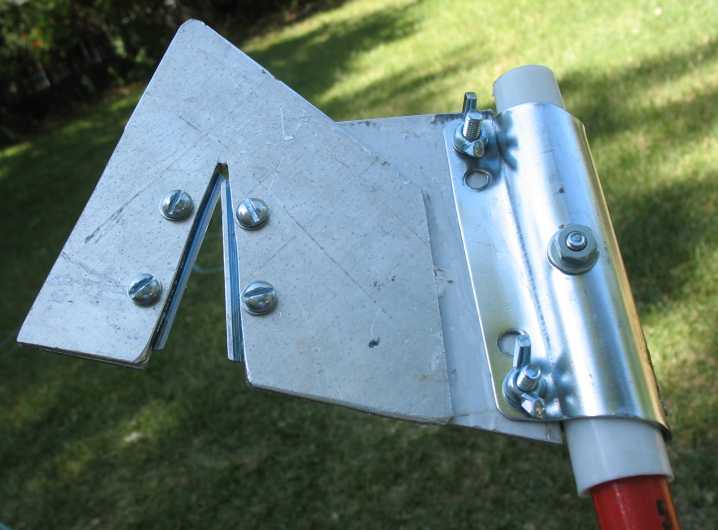
Two sides if the cutting head are shown above and below.
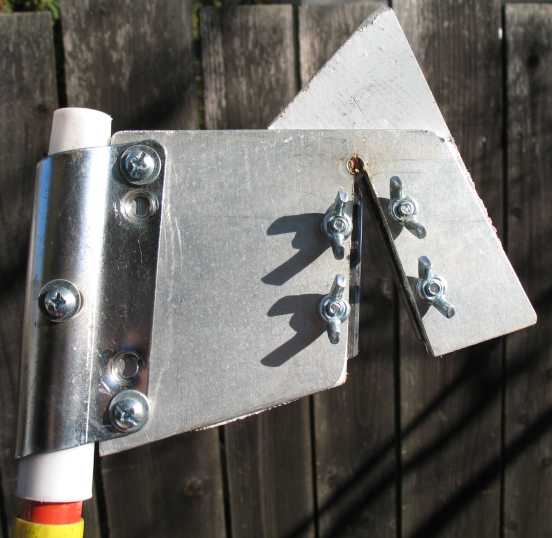
Dissembled head showing carpet cutter blades (below)
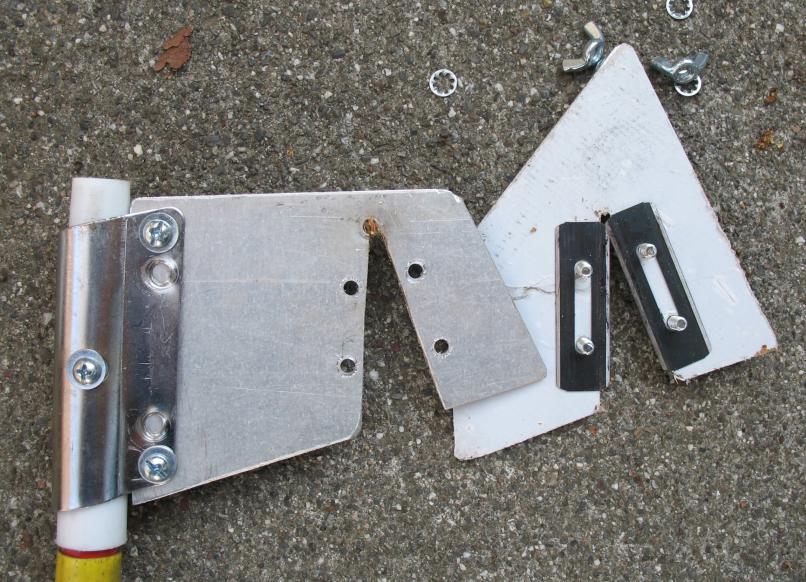
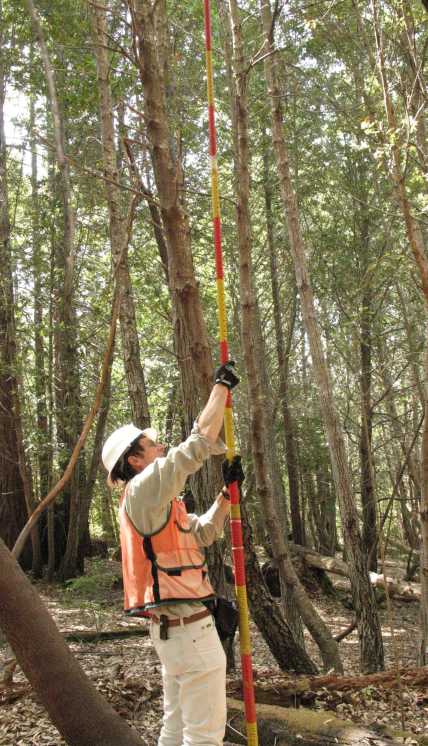
Telescoping fiberglass pole being extended (above) and threaded up into the canopy for sampling (below).

The shape of the head was designed to minimize its becoming tangled in branches and to facilitate guiding a twig into the blade slot. Once a target twig is in the cutting area, the pole is pulled down quickly to slice the shoot. If the twigs are especially flexible, it may be necessary to get the blades to bite into the twig first before giving the pole a downward pull to make the slice.
One potential problem is deeply hooking a branch that is too thick to cut. Depending on the type of wood, twigs up to about 0.5 cm diameter can be sampled easily. Somewhat stiff and horizontal branchlets are easier to cut off than pendulous or very flexible branchlets, which can be difficult to negotiate into the cutting notch. It's advisable to practice with lower branches before you try for the really high stuff to see what you can safely extract.
Another issue is that the cut twig simply falls to the ground, so it's good to have a spotter watching to make sure you can recover it. Cut twigs can also lodge in other branches on the way down if the canopy is dense. The pole can be used to dislodge the twig or to hook it for transport back to the ground (below).
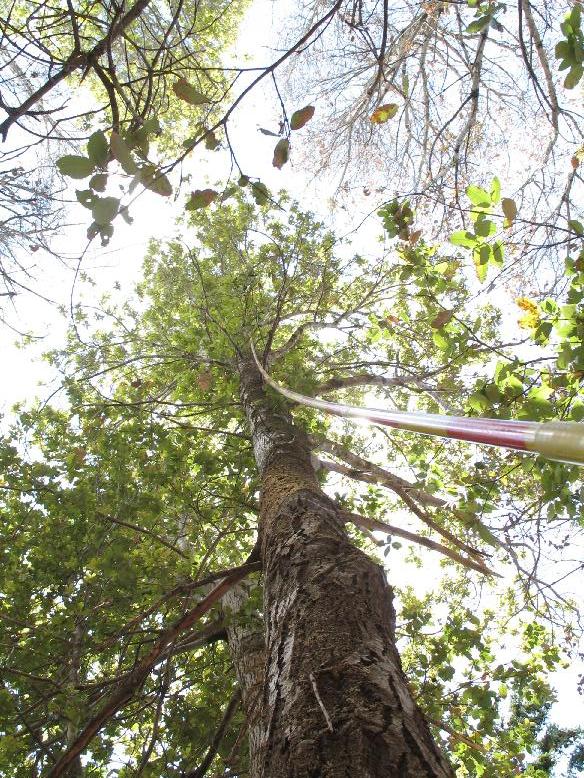
Stratosampler being used to sample tanoak twigs at a height of about 43 ft (13 m).
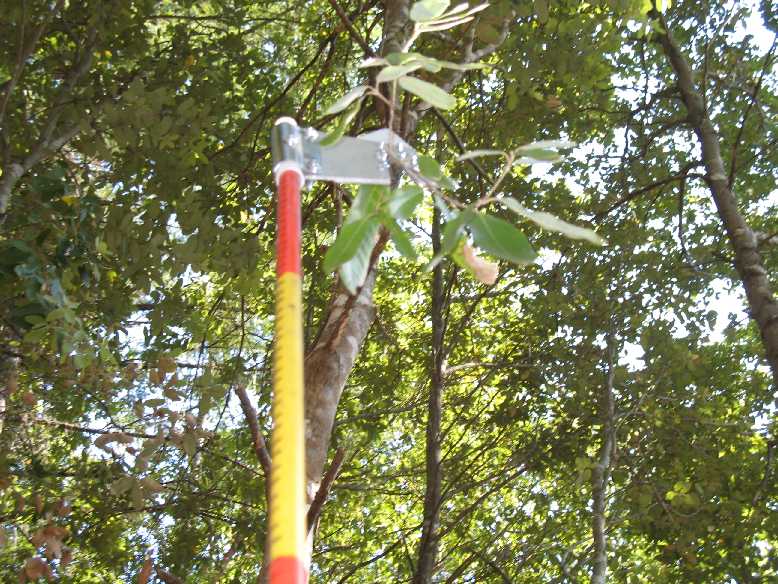
Tanoak twig snagged in the sampler head is being brought down (image above). More commonly, the cut branch will fall free of the cutting head and drop on its own.